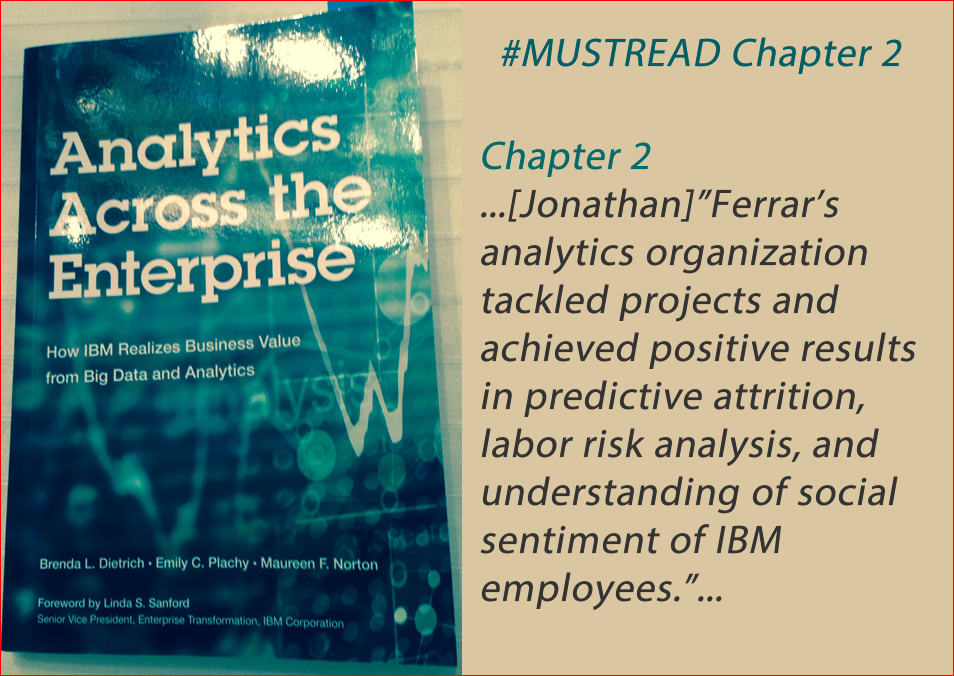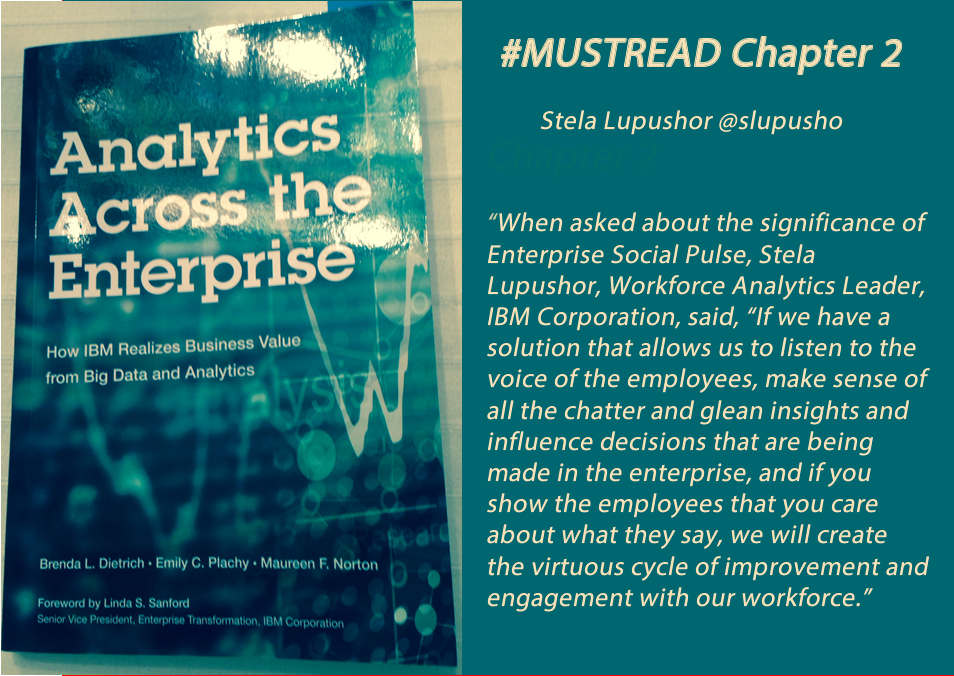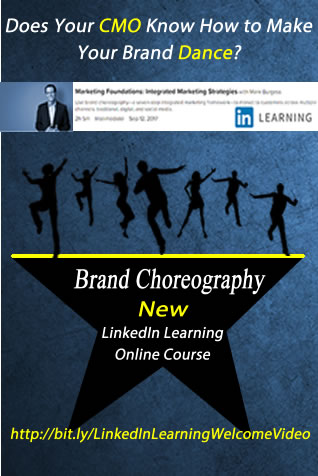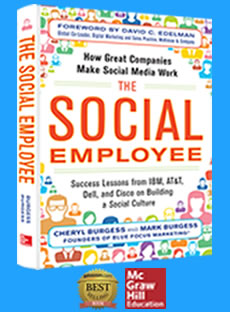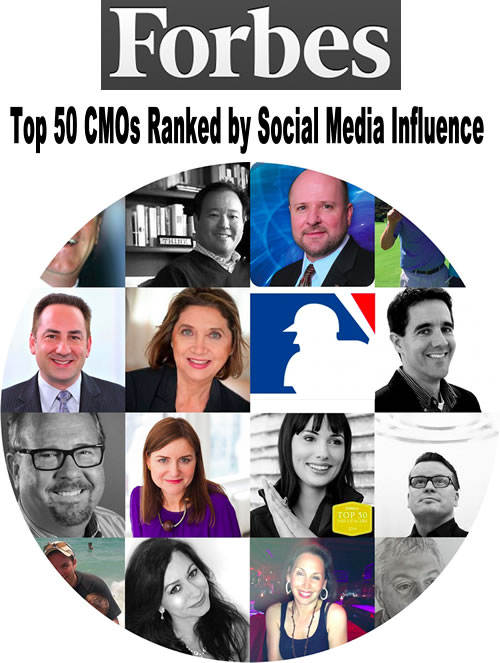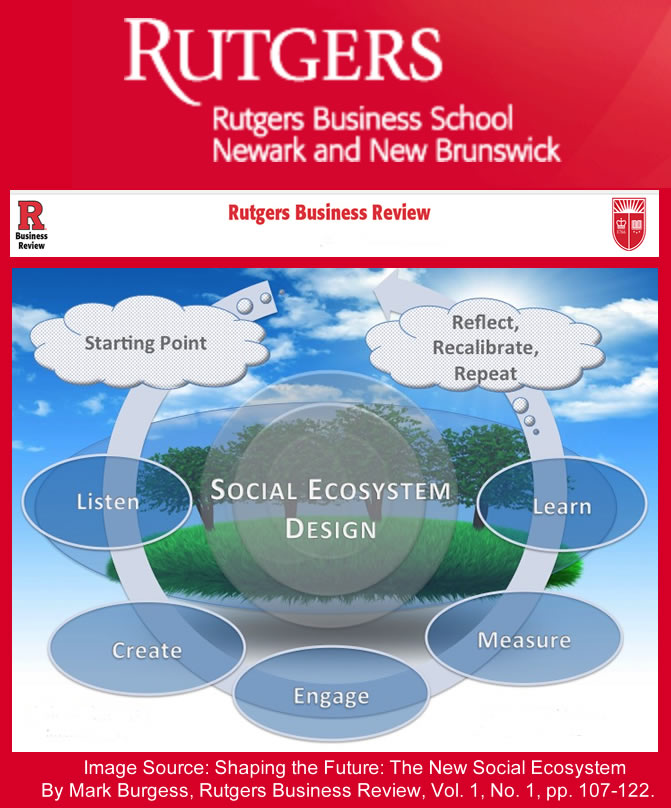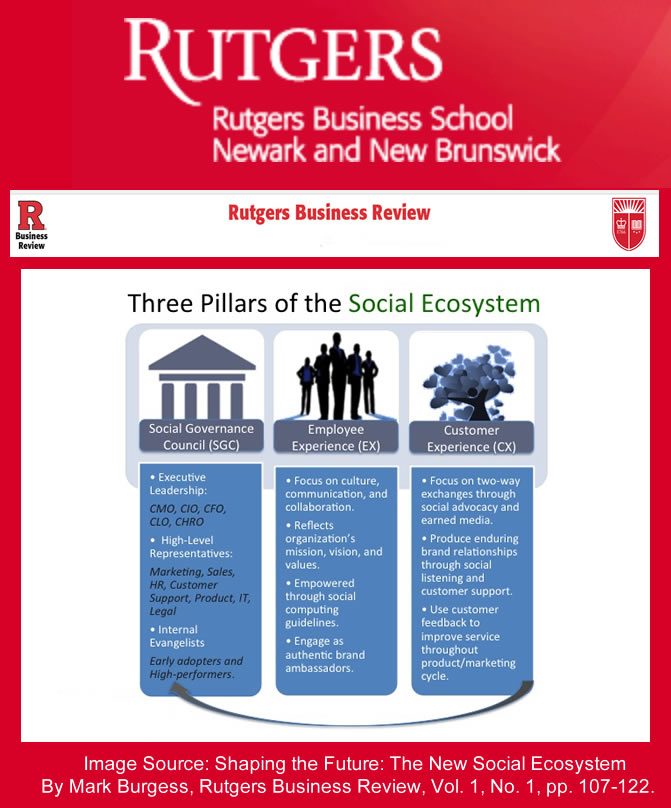One can’t get very far into a soci al business conversation these days without the subject of analytics coming up. For many, this topic is welcomed, a chance to put current business thinking into action. For others, it’s a source of trepidation, a topic so increasingly massive and multifaceted that picking a point of entry into the conversation—let alone getting into specific best practices—is a challenge unto itself.
al business conversation these days without the subject of analytics coming up. For many, this topic is welcomed, a chance to put current business thinking into action. For others, it’s a source of trepidation, a topic so increasingly massive and multifaceted that picking a point of entry into the conversation—let alone getting into specific best practices—is a challenge unto itself.
Despite the scope of analytics applications in business, big data analytics is most commonly associated with external, customer facing applications—developing consumer buying profiles, determining the impact of marketing efforts, and the like. But as IBM’s Analytics Across the Enterprise, by Brenda Dietrich and Emily Plachy (@eplacy), demonstrates, analytics has the potential to impact every facet of an enterprise to improve efficiency and profitability.
The entire book is very well organized and paints a vivid picture of how analytics can be used in today’s social businesses, offering a detailed history of the kinds of changes the skillful deployment of big data can bring. At Blue Focus Marketing (@BlueFocus), we have had the privilege of enjoying an ongoing conversation with IBM regarding employee development and retention in social business, having featured the brand’s success story in our Amazon best-selling book, The Social Employee (McGraw-Hill, 2013). Because of this, we were particularly drawn to the second chapter in Dietrich and Plachy’s Analytics Across the Enterprise, “Creating a Smarter Workforce.”
Supporting Human Resources
In a survey of more than 400 resources professionals, IBM found that analytics can dramatically improve both recruiting and employee attrition efforts. However, they also learned that implementing workforce analytics “continues to be hindered by both technical and skill-related issues.” Such was the challenge when Jonathan Ferrar (@JAFerrar), Vice President of IBM’s Smarter Workforce (@IBMSmtWorkforce), was tasked with leading HR workforce analytics at IBM.
Although Ferrar had a mandate from the C-Suite, an essential component for ensuring the success of any social business initiative, he discovered that analytics knowledge within the HR organization was lacking. Thus, his first task was not implementation, but education—bolstered by the introduction of a few analytics experts into the HR fold. Says Ferrar on the experience, “You have to answer the questions that are being asked by the business leaders, and if this means tackling hard problems, then that’s what you must do.”
Soon, Ferrar’s retooled HR organization had made great strides in predictive attrition, labor risk analyses, and, perhaps most critically, understanding the social sentiment of IBMers. The quick turnaround from designing the program and achieving results is surely a testament to the power of predictive analytics when implemented successfully.
The Enterprise Social Pulse Program
Ultimately, Ferrar’s work led to the development of the Enterprise Social Pulse Program, a system designed to anonymously monitor employee’s feelings about their company and feed it back to them in order for the social organization as a whole to gain a better understanding of where they were as an employee culture.
This program allowed IBMers to monitor what their fellow employees were talking about both globally and by region, ultimately enabling any developing issues or concerns to come to the surface and be addressed quickly and effectively. On the success of the program, Stela Lupushor (@slupusho), former Workforce Analytics Leader at IBM, said, “If we have a solution that allows us to listen to the voice of the employees, make sense of all the chatter and glean insights and influence decisions that are being made in the enterprise, and if you show the employees that you care about what they say, we will create the virtuous cycle of improvement and engagement with our workforce.”
Despite the success, Ferrar notes that these programs will remain in constant need of revision. As good as predictive or analytical computers and algorithms become, they still lack nuance when it comes to human expression via social media—especially with regards to sarcasm and humor. However, those invested in HR analytics at IBM will be first to say that it’s often better to do things fast than perfectly. This is most apparent with worker attrition; since prized employees can depart a company suddenly or unexpectedly, it doesn’t do anyone any good if an analytical process takes so long to produce results that an employee has already left before steps could be taken to retain them.
